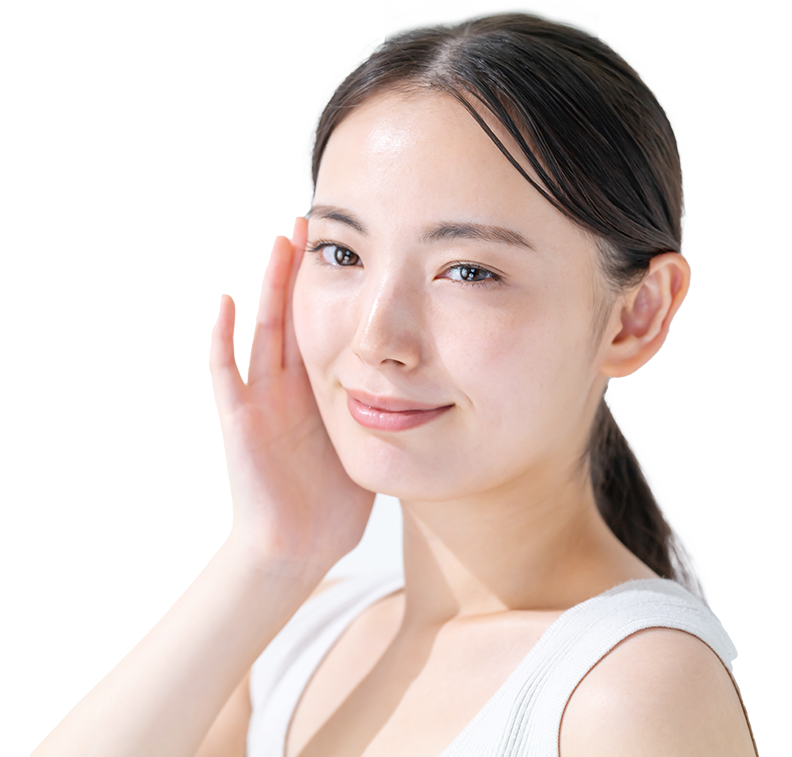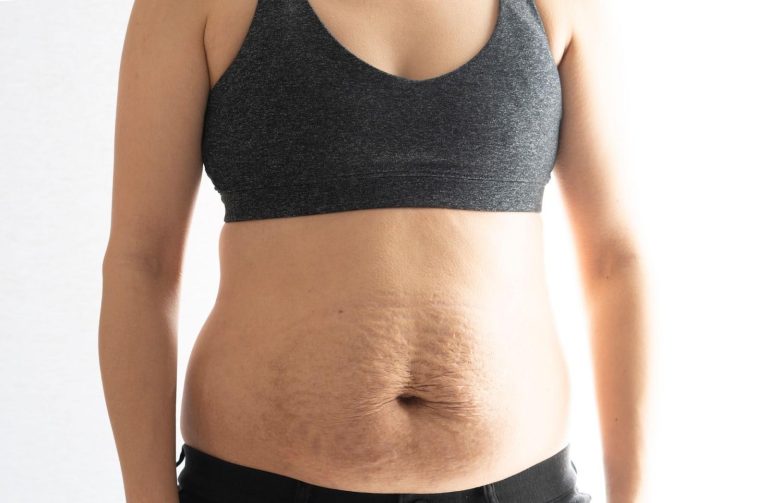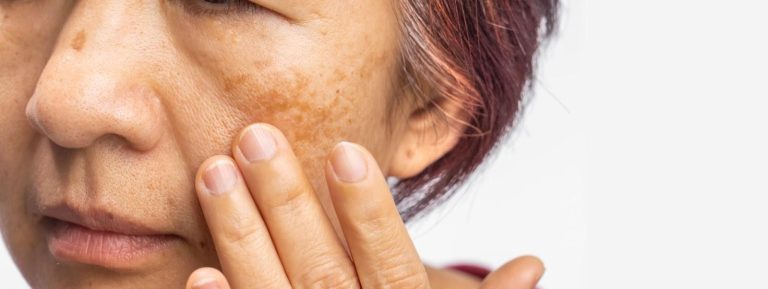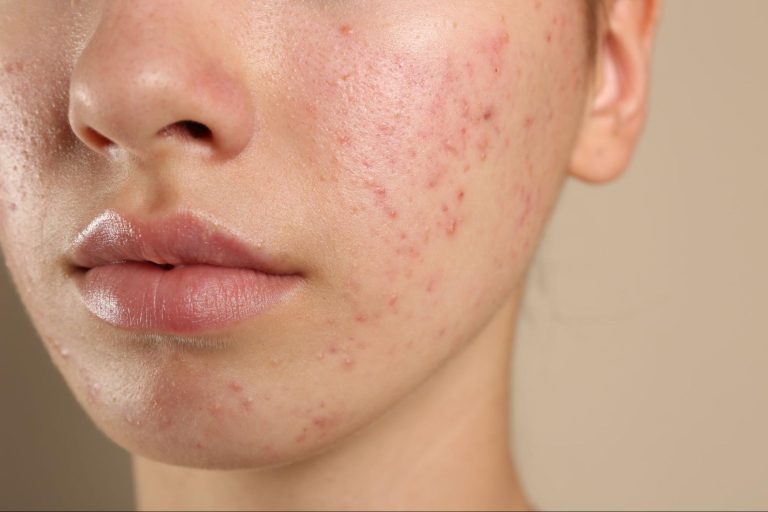
During pregnancy, the body undergoes significant hormonal, vascular, and metabolic changes, many of which affect the skin. While some pregnancy-related skin changes gradually fade, others persist or even worsen after childbirth.
We understand that new mothers often experience a range of postpartum skin concerns, including melasma (dark patches on the face), acne, stretch marks, and increased skin sensitivity. Many also notice postpartum hair loss (telogen effluvium), which typically peaks between 3 to 6 months after giving birth, or weakened nails that become brittle or prone to splitting. Understandably, these changes can feel overwhelming, especially when combined with the physical and emotional adjustments of early motherhood.
Thankfully, many of these conditions are treatable with the right approach.

The postpartum period brings significant hormonal fluctuations that can affect the skin in multiple ways. Here are some of the common skin conditions that affect new mothers post-pregnancy:

Although many postnatal issues resolve naturally, some symptoms we experience could be telling of an underlying condition. Some signs and symptoms to look out for include:

Being a new mother in itself is a new challenge, and having to deal with the hormonal and physiological changes that come with it can be daunting. A postnatal dermatologist can provide insight on these changes, as well as medical-grade, breastfeeding-safe treatments.
Understandably, every new mother’s skin responds differently after childbirth. To provide the most personalised care, we utilise comprehensive diagnostic methods to assess postpartum skin, hair, and nail concerns accurately.
The type of treatment recommended by your dermatologist varies, depending on the type of skin concern you experience and the root cause of the issue. Some of these treatments include:
Melasma can take months to fade naturally, and in some cases, pigmentation lingers without intervention. Our treatments focus on reducing excess melanin production while protecting the skin from further darkening.
Fluctuating hormone levels, sleep deprivation, and stress can trigger postnatal acne. Treating acne postpartum requires gentle yet effective solutions that avoid harsh ingredients unsafe for breastfeeding mothers.
Stretch marks form when the skin stretches rapidly, causing collagen and elastin fibres to break. While they naturally fade over time, targeted treatments can improve texture, boost collagen production, and reduce their visibility.
Hair shedding after childbirth is common and usually self-resolving. However, for those experiencing prolonged or severe hair loss, we offer treatments to support regrowth and strengthen hair follicles.
Many women develop increased skin sensitivity, irritation, or dryness after childbirth. Maintaining a healthy skin barrier is crucial for postnatal skincare.
Post-pregnancy patients need specialised obstetric dermatological care. At Livingstone Dermatology, we understand that new mothers experience skin concerns differently, require breastfeeding-safe treatments, and have limited time for complex routines. Our dermatologist provides customised treatment plans that fit into your postnatal lifestyle, helping you feel confident in your skin once again.
If you are experiencing persistent skin, hair, or nail concerns after childbirth, schedule a consultation with us today for a detailed skin analysis and personalised postnatal treatment plan.
It’s important to review your skincare products postpartum, as certain ingredients like retinoids and high-dose salicylic acid are not recommended during breastfeeding. Opt for products with gentle, hydrating ingredients, and consult a dermatologist to ensure they’re safe for both you and your baby.
While genetics play a significant role in the development of stretch marks, maintaining skin hydration can help. Regularly applying moisturisers rich in hyaluronic acid or natural oils may improve skin elasticity. However, no topical treatment can guarantee prevention.
Yes, treatments like topical azelaic acid and vitamin C are considered safe during breastfeeding and can help lighten melasma. It’s crucial to use broad-spectrum sunscreen daily to prevent further pigmentation. Always consult a dermatologist before starting any new treatment.
Postpartum hair shedding is common and usually peaks around four months after delivery. Most women see their hair return to its normal fullness by their child’s first birthday. If hair loss continues beyond this or is causing concern, consult a dermatologist.
Postpartum skin conditions in mothers, such as eczema or melasma, do not directly affect the baby. However, if you have a contagious skin condition, it’s important to take precautions to prevent transmission. Always consult a healthcare provider for guidance.
Hormonal changes after childbirth can lead to dry skin. To manage this, use a gentle, hydrating cleanser and apply a moisturiser containing emollients, occlusives, and humectants to help maintain skin hydration. Additionally, ensure you’re drinking plenty of water, especially if you’re breastfeeding.
Yes, postpartum hormonal fluctuations can make your skin more sensitive than usual. You might react to products or environmental factors that previously didn’t affect you. Opt for fragrance-free, hypoallergenic skincare products and consult a dermatologist if sensitivities persist.
Yes, non-invasive treatments like some types of laser therapies and microneedling can help improve skin elasticity and reduce the appearance of stretch marks. Consult a dermatologist to determine the best course of action based on your specific needs.
Whether you’re dealing with a specific skin concern or seeking to enhance your natural beauty, Livingstone Dermatology is here to guide you on your journey to healthy, radiant skin.
Schedule an appointment today and experience the Livingstone standard of care in a welcoming, professional environment.